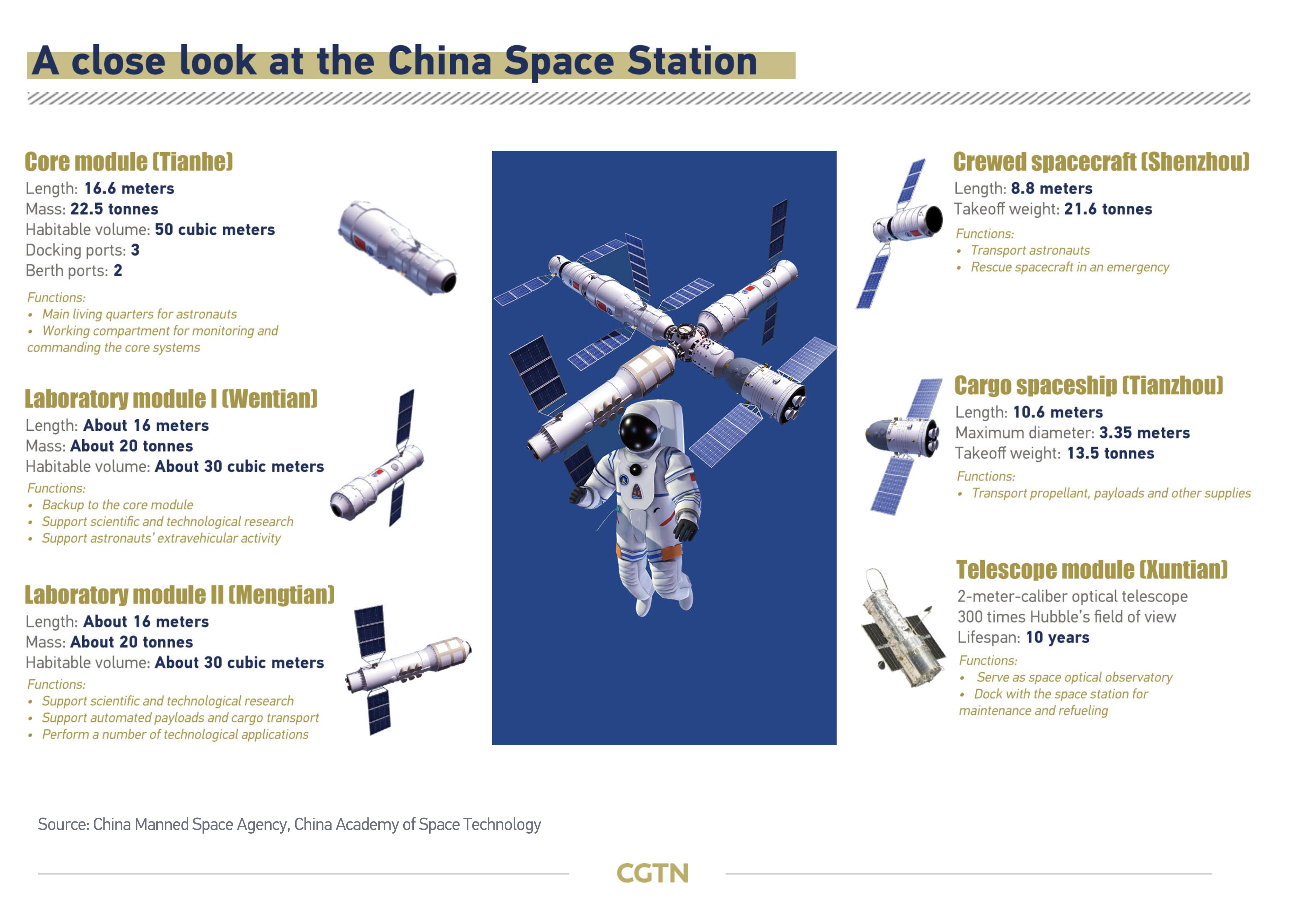September 21 marks the 30th anniversary of China's manned space program. The country will soon complete the in-orbit construction of its first-ever space station – the China Space Station, China Manned Space Agency (CMS) said in a post on Tuesday.
After endeavors of three decades, China plans to complete the assembly of the space station with the last component, the Mengtian lab module, scheduled for launch in October.
Here is a quick look at the milestones of China's manned space program.
In 1992, the Chinese government prescribed a "three-step development strategy" for the country's manned space program, which set three different phased goals.

In the first step aiming to launch a manned spaceship and bring astronauts back safely, China launched four experimental manned spacecraft with no crew from 1999 to 2002.
The four missions evaluated key space exploration technology, conducted experiments in the areas of materials science, astronomy, and physics in a microgravity environment, and tested functions related to the safety of astronauts.
In October 2003, the Shenzhou-5 spaceship carrying Chinese astronaut Yang Liwei was launched, making China the third country to send a man into space after the Soviet Union and the United States.
The second step was developing advanced space flight techniques and technologies including extra-vehicular activity and orbital docking.
In September 2008, Chinese astronaut Zhai Zhigang conducted the first Chinese spacewalk during the Shenzhou-7 mission. China thus became the third country in the world to conduct extravehicular activity in space, following the Soviet Union and the United States.
This stage also included the launch of Tiangong-1, a transitional platform to test the docking technology, and Tiangong-2, China's first space lab.
The third step is to build a space station for large-scale, long-term manned missions.
In April 2021, China sent the core module of its space station Tianhe into space, kicking off a series of key launch missions that aim to complete the construction of the station by the end of 2022.














